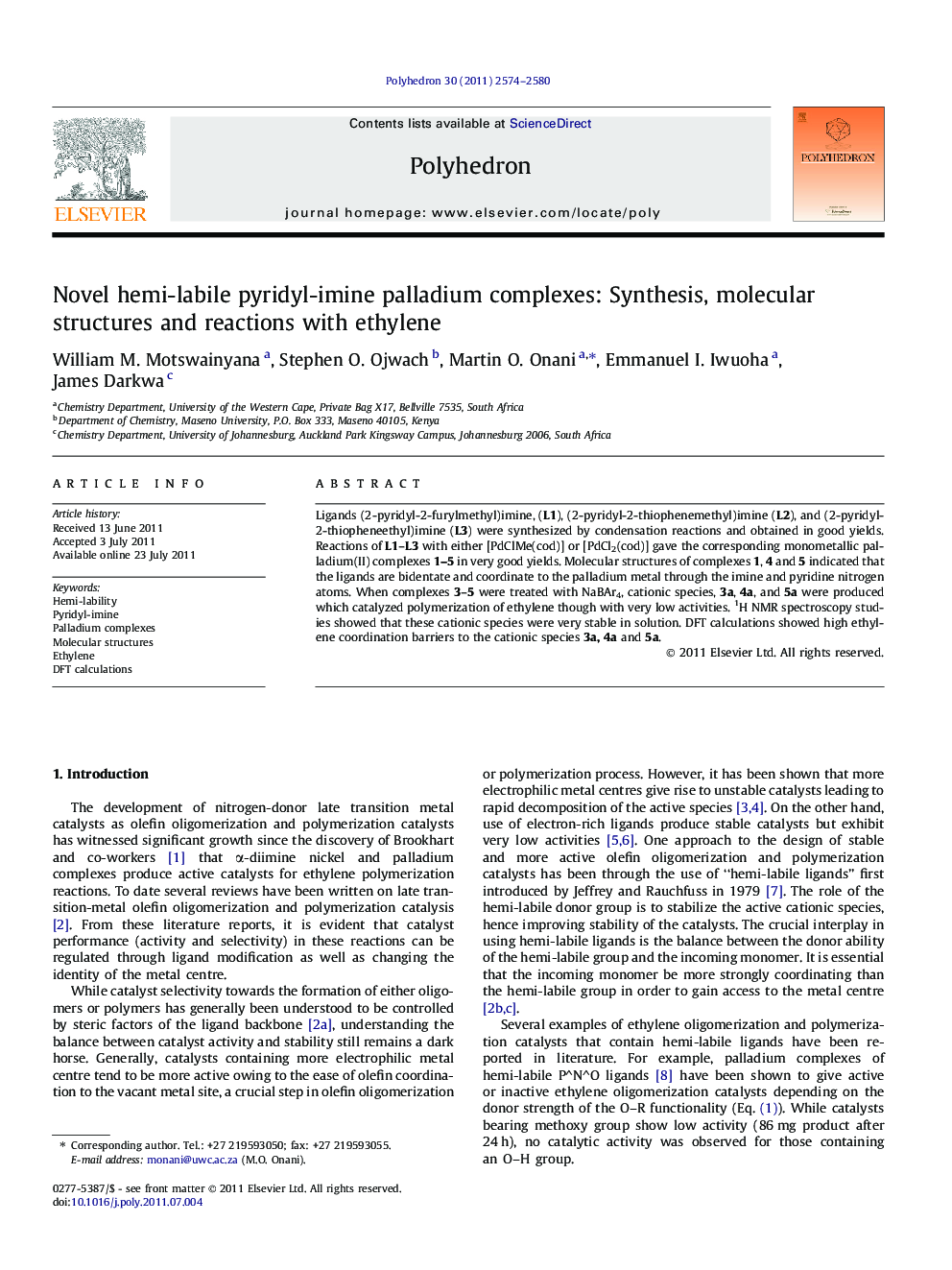| Article ID | Journal | Published Year | Pages | File Type |
|---|---|---|---|---|
| 1334832 | Polyhedron | 2011 | 7 Pages |
Ligands (2-pyridyl-2-furylmethyl)imine, (L1), (2-pyridyl-2-thiophenemethyl)imine (L2), and (2-pyridyl-2-thiopheneethyl)imine (L3) were synthesized by condensation reactions and obtained in good yields. Reactions of L1–L3 with either [PdClMe(cod)] or [PdCl2(cod)] gave the corresponding monometallic palladium(II) complexes 1–5 in very good yields. Molecular structures of complexes 1, 4 and 5 indicated that the ligands are bidentate and coordinate to the palladium metal through the imine and pyridine nitrogen atoms. When complexes 3–5 were treated with NaBAr4, cationic species, 3a, 4a, and 5a were produced which catalyzed polymerization of ethylene though with very low activities. 1H NMR spectroscopy studies showed that these cationic species were very stable in solution. DFT calculations showed high ethylene coordination barriers to the cationic species 3a, 4a and 5a.
Graphical abstractThe pyridyl-imine heterocycle ligands form mononuclear palladium complexes and adopt bidentate coordination modes. Chloride abstraction from the palladium complexes results in coordination of the furan or thiophene group to produce tridentate bound cationic species. Under high ethylene pressure, the furan or thiophene arms dissociates to allow ethylene coordination.Figure optionsDownload full-size imageDownload as PowerPoint slideHighlights► We report new monometallic pyridyl-imine palladium complexes containing hemi-labile furan or thiophene. ► They were stable catalysts for the polymerization of ethylene to low density polyethylene though with very low activities. ► DFT showed ethylene competing with hemi-labile moieties.
